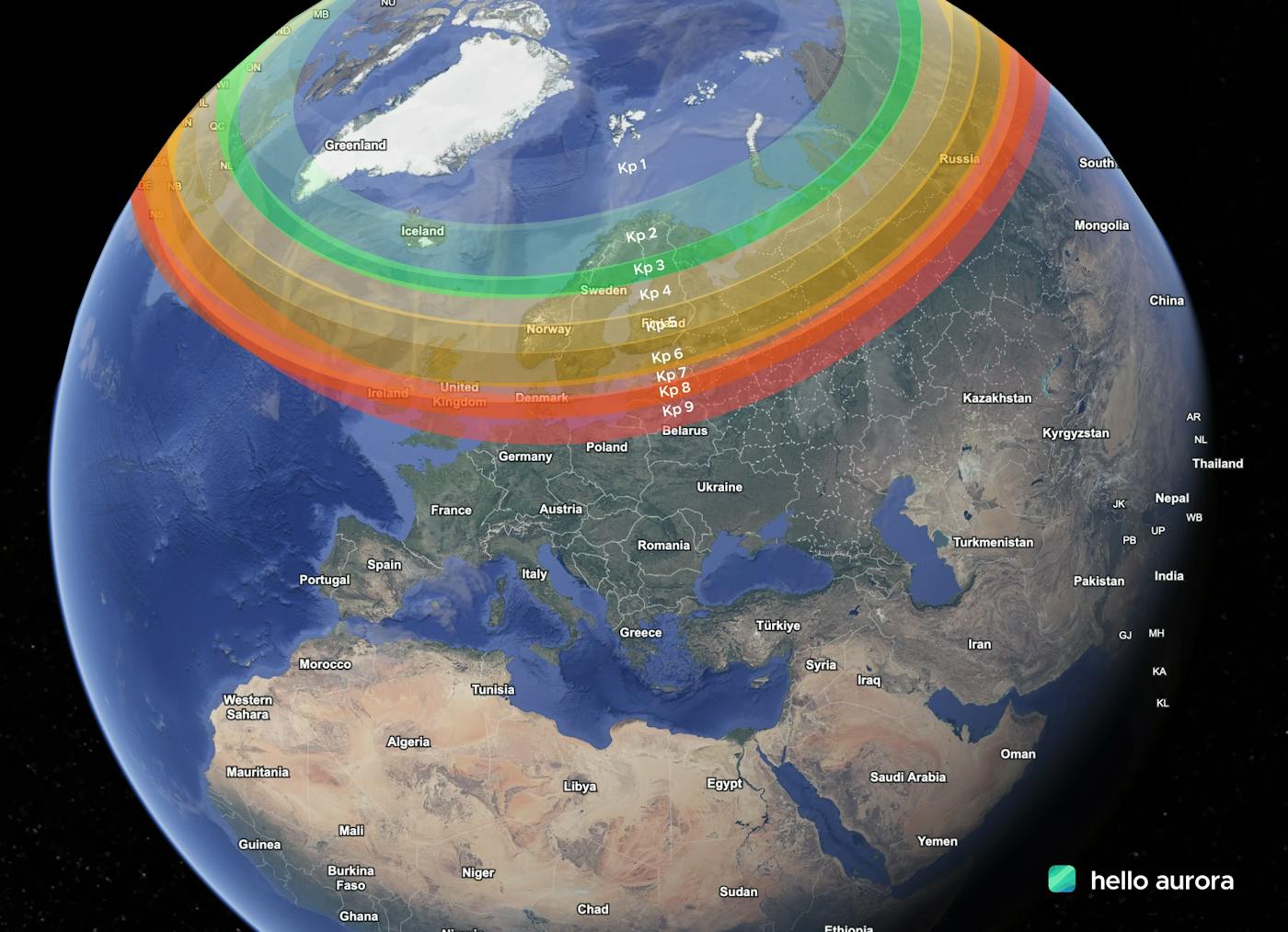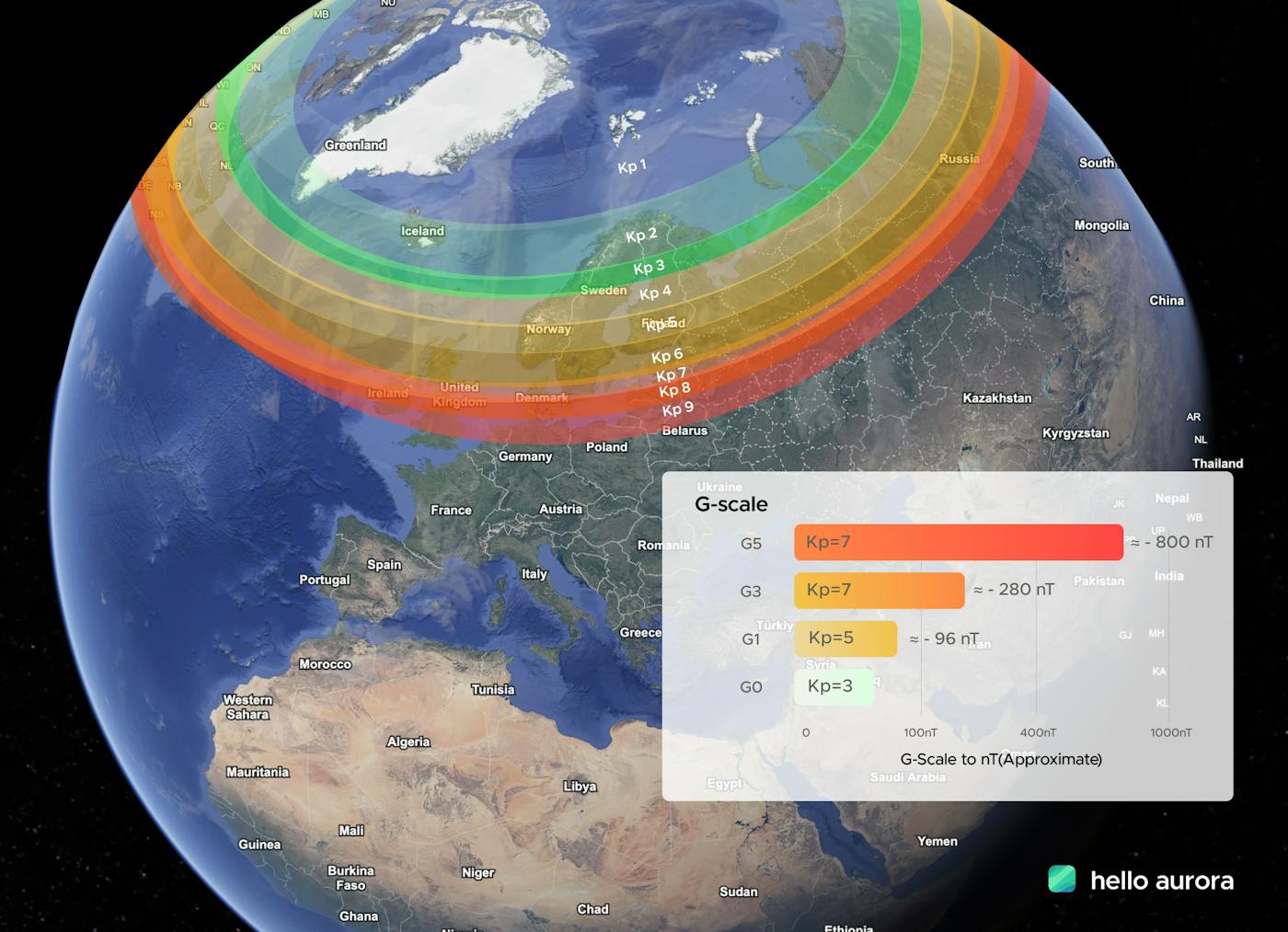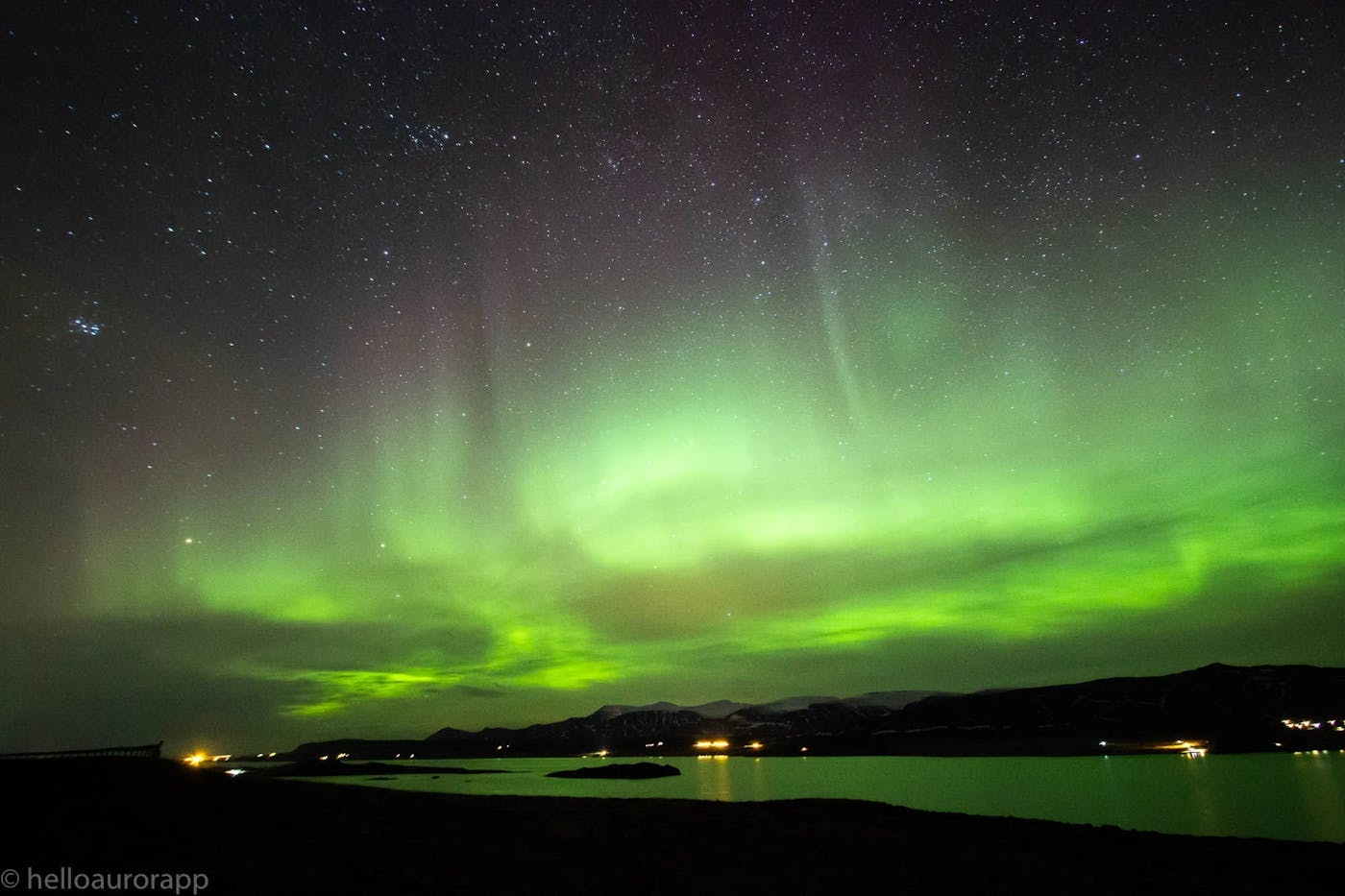Understanding the KP index
What is KP index?
The KP index (also known as the Kp index, planetary K-index, or geomagnetic index) is a standardized measurement of geomagnetic activity on Earth. It measures how much Earth's magnetic field is disturbed by solar wind and geomagnetic storms.
How the KP index works
The KP index is calculated using data from 13 magnetometer stations located around the world, spanning from the North Pole to the South Pole. These ground-based instruments continuously monitor changes in Earth's magnetic field caused by solar activity.
Key characteristics:
- Scale range: 0 to 9 (0 = quiet magnetic conditions, 9 = extreme geomagnetic storm)
- Update frequency: Every 3 to 6 hours
- Global measurement: Represents worldwide average geomagnetic activity, not local conditions
The index was developed in 1949 by German scientist Julius Bartels and remains the most widely used metric for measuring geomagnetic disturbances worldwide.
KP and aurora forecast
The KP index is the most widely used tool for predicting the northern lights. But it has a serious limitation: the KP index relies on a 3-hour average of geomagnetic data collected from 13 observatories around the world, including locations outside the auroral oval.
Because of this, the KP index is often too slow and too generalized to capture short-lived auroral activity, such as auroral substorms. These powerful bursts can produce the brightest northern lights displays, yet they are frequently missed when relying only on KP forecasts.
Understanding auroral substorms
Research from the Swedish Institute of Space Physics shows that auroral substorms, the most intense and visually stunning aurora displays, typically last only 10 to 30 minutes. These brief but dramatic events can occur when the global KP index remains relatively low.
💡Think of it this way: Using a 3-hour average to predict a 10-minute auroral event is like using a monthly weather report to decide whether to bring an umbrella today.
What this means for aurora hunters
This means,
- You can miss spectacular displays by relying solely on KP forecasts
- You might go out waiting for hours and see nothing because you rely on KP index
- Bright auroras can appear at lower KP values: Vivid, dynamic auroras often occur at Kp 2–3 when local geomagnetic conditions are favorable, even though the global average remains low.
- High KP doesn't guarantee visibility: A Kp 5 forecast might reflect activity concentrated in regions far from your location, while your local skies remain quiet.
Why the KP index matters
Originally the KP index was designed for scientific and industrial purposes, the KP index helps predict impacts on:
- Power grids: Strong geomagnetic storms (Kp 7+) can induce currents that damage transformers and cause regional blackouts.
- Satellites: Disturbances in the ionosphere affect navigation, communications, and orbital drag.
- Radio communications: High-frequency (HF) radio is disrupted by geomagnetic storms, impacting aviation and maritime industries.
Better aurora forecasting metrics for aurora hunters
Professional aurora photographers and dedicated aurora hunters don’t rely on slow 3-hour KP index forecasts. Instead, they use real-time aurora data that updates every few minutes.
While beginners wait for a “KP 5 forecast,” experts track aurora by monitoring:
- Local magnetometers – instruments showing magnetic activity in your exact region.
- Solar wind data from satellites – especially the IMF Bz value. A negative Bz means Earth’s magnetic field is open at the north pole, increasing chances of an aurora borealis. A positive Bz favors the south pole instead.
- Live cloud cover maps – to see if skies are clear for visibility.
- Most importantly, aurora hunters watch for auroral substorms: short, powerful bursts of activity lasting 10–30 minutes. These substorms often produce the brightest northern lights displays, even during lower KP levels.
KP requirements by location
Not everyone needs the same Kp index level to see the northern lights. It all depends on where you are on Earth.


